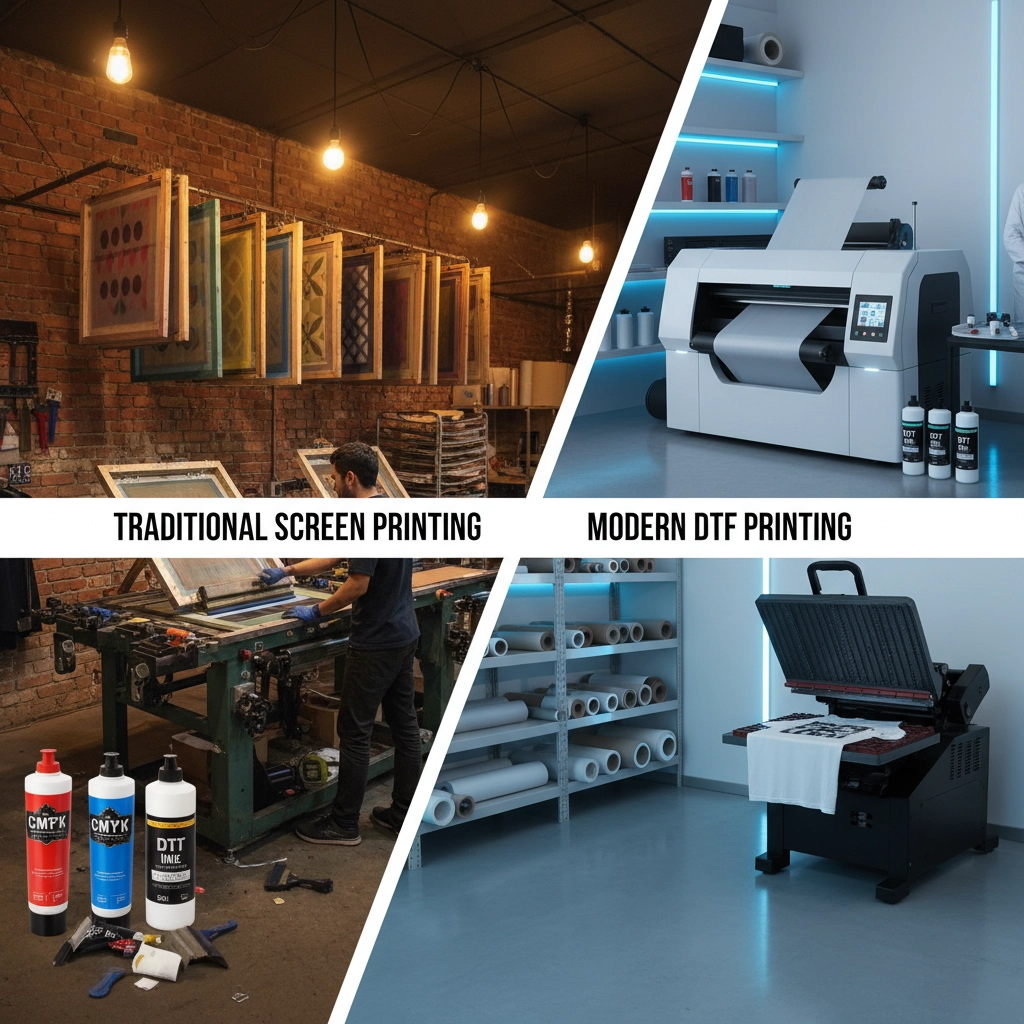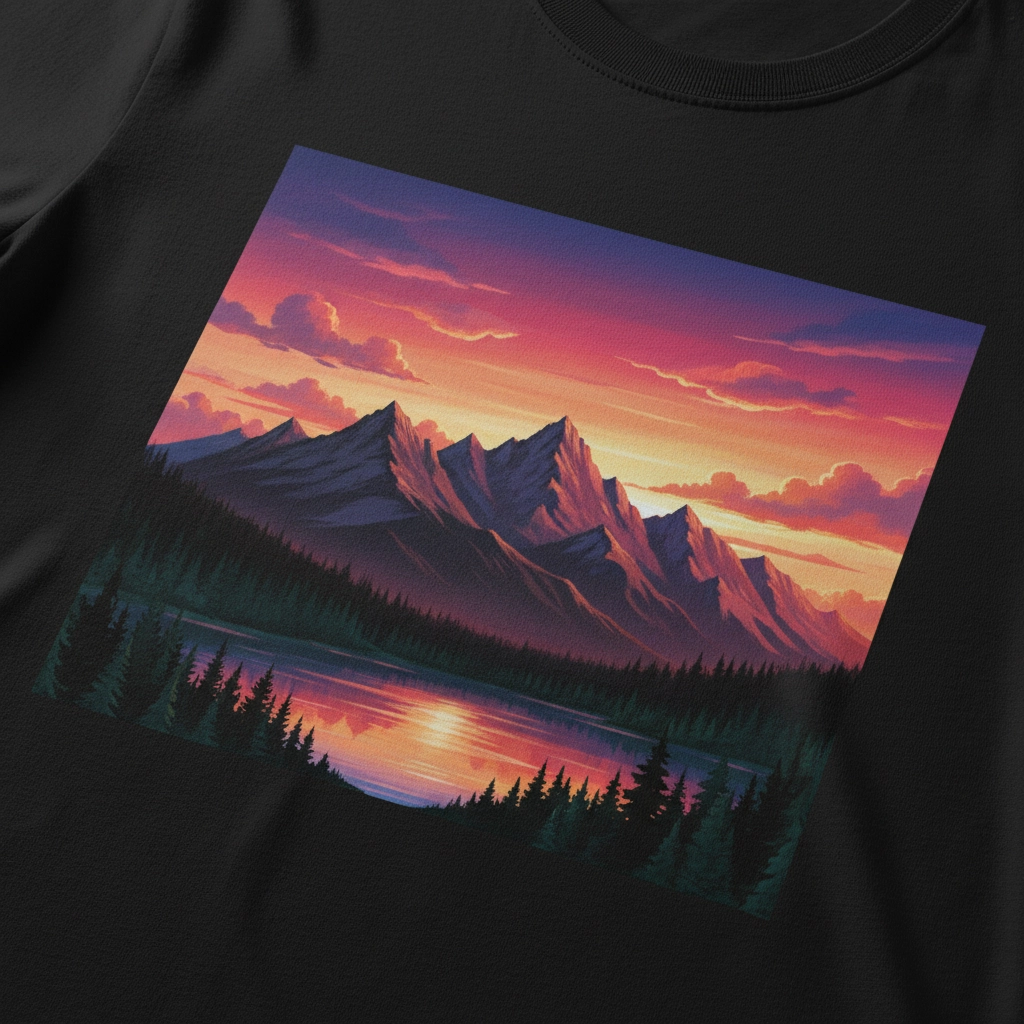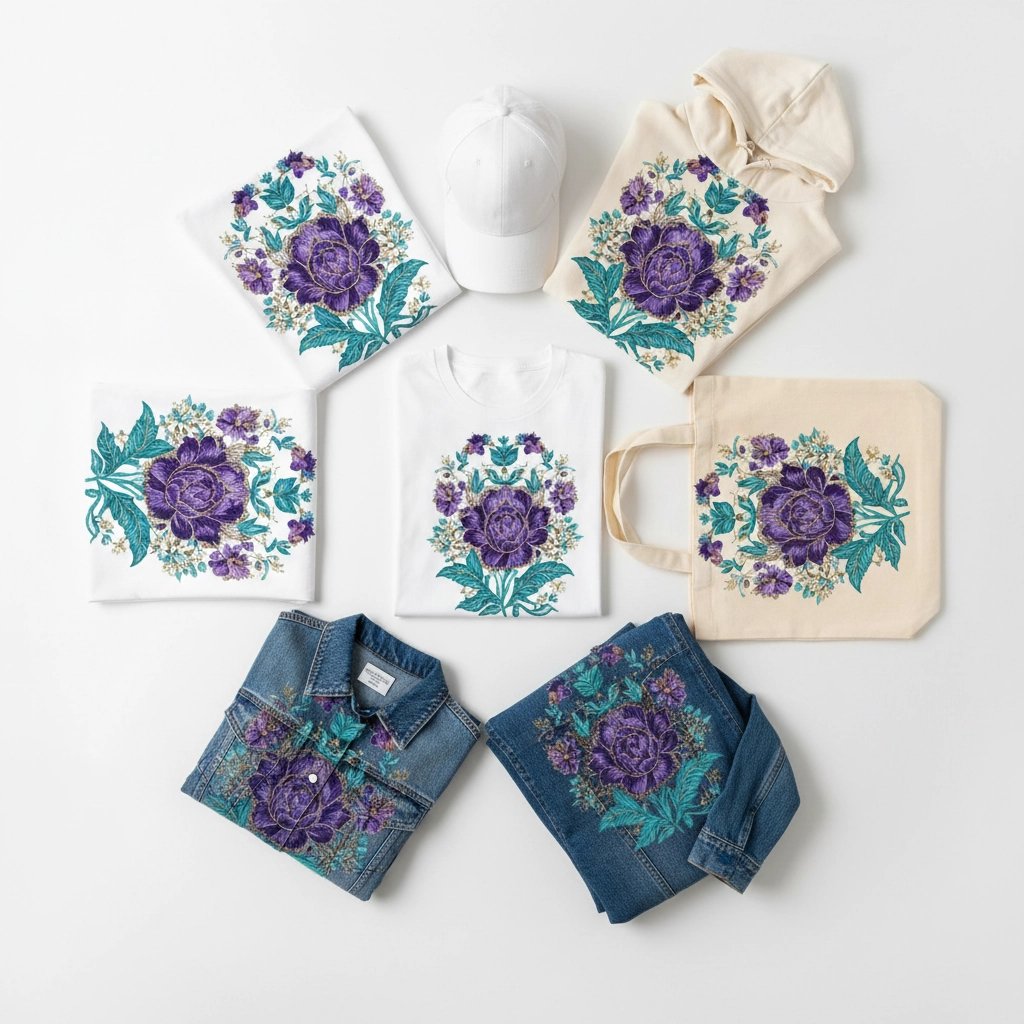The apparel printing world is having a moment right now. If you've been in the custom printing game for a while, you've probably noticed that everyone's talking about DTF printing like it's the next big thing. And honestly? They might be onto something.
As someone who's watched printing technology evolve over the years, I can tell you that DTF (Direct-to-Film) printing isn't just another trend, it's genuinely changing how we think about custom apparel. But before we dive into why DTF might be the future, let's break down what we're actually comparing here.
What Are We Actually Talking About?
Screen printing has been the workhorse of the apparel industry for decades. It's that tried-and-true method where ink gets pushed through a mesh screen onto fabric. Think of it like a sophisticated stencil system, each color needs its own screen, and you're basically stamping designs onto shirts one color at a time.
DTF printing is the new kid on the block. Instead of screens and squeegees, you're printing your design onto a special film using digital printers, coating it with adhesive powder, and then heat-pressing it onto whatever fabric you want. No screens, no setup nightmare, no color limitations.

The Screen Printing Reality Check
Let's give credit where it's due: screen printing built this industry. It's reliable, produces vibrant colors, and when you're cranking out thousands of identical shirts, the per-unit cost is hard to beat.
But here's where screen printing starts to show its age:
The Setup Nightmare: Every single color in your design needs its own screen. That cool design with six colors? You're looking at six different screens, six different setups, and a whole lot of prep time before you even print your first shirt.
Minimum Order Madness: Because of all that setup work, screen printing only makes financial sense for larger orders. Want just 25 custom shirts for your local softball team? You're going to pay premium prices or get turned away entirely.
Design Limitations: Complex designs with gradients, fine details, or photorealistic elements? Screen printing struggles here. It's fantastic for bold, simple graphics, but anything more nuanced becomes a challenge.
Fabric Pickiness: While screen printing works on most fabrics, it can be finicky with certain materials, especially anything with stretch or unusual textures.
According to the Specialty Graphic Imaging Association, screen printing still dominates large-volume commercial printing, but the tide is shifting toward more flexible, digital solutions for smaller runs and complex designs.
Why DTF Is Changing Everything
Now let's talk about why DTF printing is getting everyone excited: and why it might actually deserve the hype.
Universal Fabric Freedom: DTF works on virtually everything. Cotton, polyester, blends, nylon, leather, canvas: even shoes. This isn't marketing fluff; it's a game-changer for businesses that want to offer diverse product lines without juggling multiple printing methods.
Design Without Limits: Remember those complex designs that gave screen printing nightmares? DTF handles them like it's nothing. Photorealistic images, unlimited colors, fine details, gradients: all fair game. You're only limited by what you can design digitally.
No Minimum Orders: Want to print just one shirt? No problem. DTF treats single pieces and bulk orders with the same efficiency. This opens up entirely new business models around on-demand printing and personalization.

The Numbers Game: DTF vs Screen Printing
Let's get practical and look at what this means for your business:
Setup and Equipment Costs:
- DTF setup: $1,500-$3,000 for a basic system
- Screen printing setup: $1,000+ just for basic equipment, plus ongoing screen costs
Time Investment:
- DTF: Design to finished product in under 30 minutes
- Screen printing: Hours of screen prep before you even start printing
Material Costs:
- DTF: Higher per-print material costs, but no waste from setup or color changes
- Screen printing: Lower material costs for bulk runs, but significant waste during setup and color changes
Labor Requirements:
- DTF: Mostly automated once you learn the process
- Screen printing: Heavy manual labor, especially for multi-color jobs
Research from Printing Industries of America shows that DTF printing can be 40-60% faster for orders under 100 pieces, while maintaining comparable quality to screen printing.
Where DTF Really Shines
Small Business Liberation: If you're running a small custom apparel business, DTF eliminates the barriers that made screen printing challenging. No more turning away small orders or limiting your design complexity.
E-commerce Integration: DTF pairs perfectly with print-on-demand business models. You can offer hundreds of designs without holding inventory, printing only when orders come in.
Prototyping and Sampling: Need to test a design before committing to a large screen printing run? DTF lets you create perfect samples quickly and affordably.
Multi-Product Lines: Want to print the same design on t-shirts, hoodies, tote bags, and hats? DTF handles them all with the same setup.

The Durability Question
One concern I hear a lot: "But does DTF printing last?" Fair question, and the answer is reassuring.
Quality DTF prints show excellent durability, often outlasting heat transfer vinyl and matching or exceeding screen printing longevity. The key is proper application: when DTF transfers are applied at the right temperature (300-325°F) for the right duration (10-15 seconds), the ink bonds permanently with the fabric fibers.
We've tested DTF prints through 50+ wash cycles with minimal fading or cracking. That's on par with high-quality screen printing and better than most other digital printing methods.
When Screen Printing Still Makes Sense
Look, I'm not here to completely trash screen printing. There are still situations where it's the right choice:
Massive Orders: If you're printing 1,000+ identical pieces, screen printing's per-unit cost is still hard to beat.
Simple, Bold Designs: For basic logos with solid colors, screen printing produces incredibly vibrant, thick ink deposits that some clients prefer.
Established Workflows: If you've got years of screen printing experience and equipment, the switching cost might not make sense for your business.
Specific Ink Requirements: Some specialized inks (like glow-in-the-dark or certain metallics) are still screen printing exclusive.
Making the Switch: Practical Considerations
If you're thinking about adding DTF to your arsenal or making the switch entirely, here's what you need to know:
Training Time: DTF has a gentler learning curve than screen printing. Most people can produce quality prints within a few days of training.
Space Requirements: DTF systems are more compact than screen printing setups. No more dedicated screen storage or washing stations.
Workflow Changes: You'll need to adjust your pricing structure and customer expectations around turnaround times.
At Abstract Printing Solutions, we've helped dozens of businesses navigate this transition. The most successful switches happen when businesses view DTF as expanding their capabilities rather than replacing everything they know.
Looking Forward: Why DTF Is the Future
The printing industry always follows broader technological trends, and right now, those trends all favor DTF:
Customization Demand: Consumers increasingly want personalized products. DTF's ability to handle one-off custom jobs positions it perfectly for this market.
Sustainability Focus: DTF generates less waste than screen printing: no cleaning chemicals, no wasted screens, no setup material waste.
Automation Ready: DTF systems are becoming more automated every year. Newer machines handle powder application, curing, and even film cutting automatically.
Digital Integration: DTF workflows integrate seamlessly with digital design tools and e-commerce platforms, matching how modern businesses operate.
The Digital Textile Printing Market Report projects 13.8% annual growth in digital textile printing through 2027, with DTF leading the charge in the custom apparel segment.
The Bottom Line
DTF printing isn't just a fad: it's addressing real limitations that have held back custom apparel businesses for years. While screen printing will always have its place for specific applications, DTF offers the flexibility, quality, and efficiency that modern printing businesses need to thrive.
Whether you're just starting out or looking to expand your capabilities, DTF printing provides a path to serve more customers, take on more diverse projects, and compete in an increasingly personalized marketplace.
The future of apparel printing is digital, flexible, and customer-focused. DTF printing delivers on all three fronts, which is why smart printing businesses are making it part of their toolkit today.
Ready to explore what DTF can do for your business? Check out our complete product lineup and see how we can help you stay ahead of the curve.
